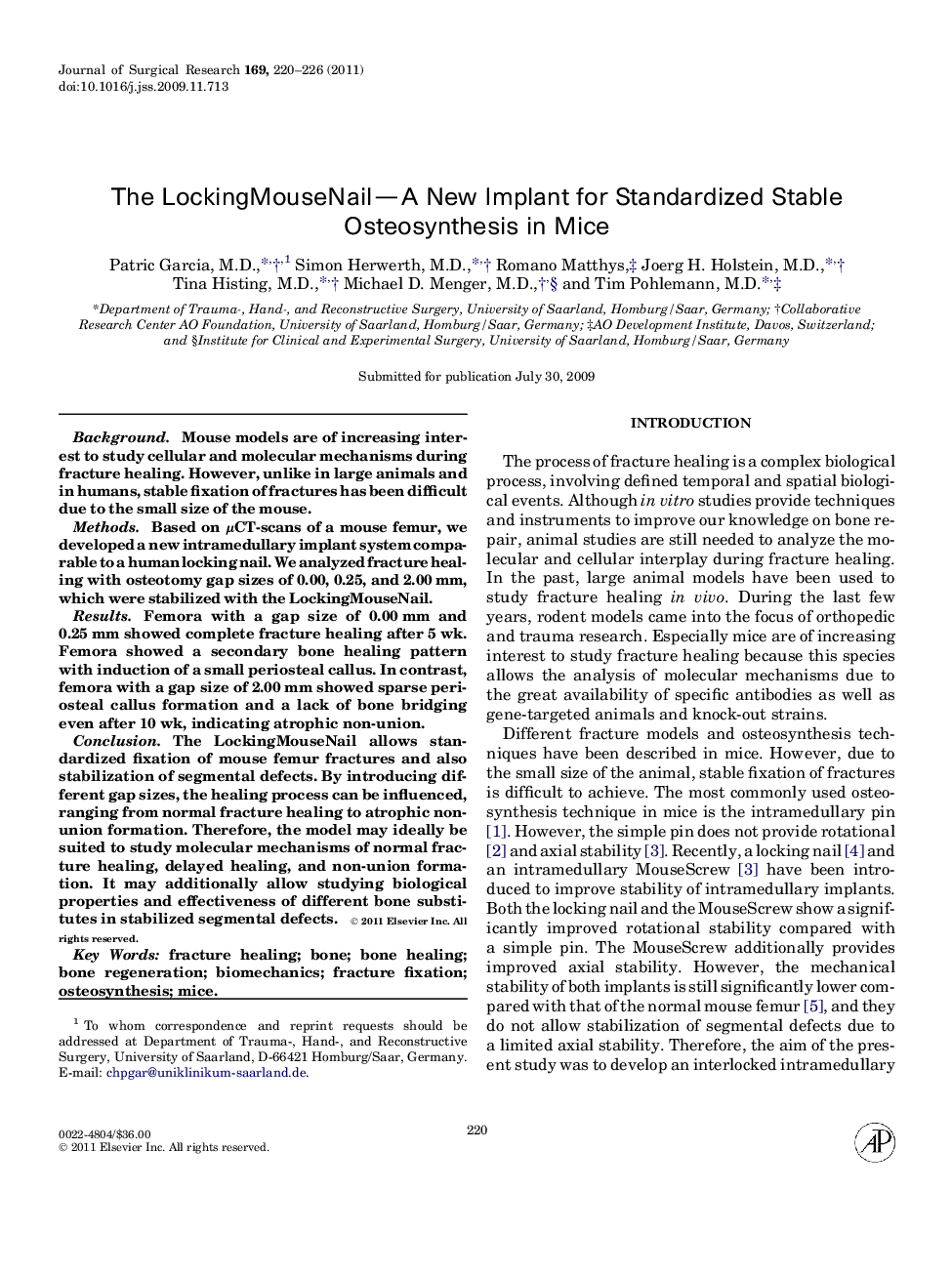| Article ID | Journal | Published Year | Pages | File Type |
|---|---|---|---|---|
| 4302344 | Journal of Surgical Research | 2011 | 7 Pages |
BackgroundMouse models are of increasing interest to study cellular and molecular mechanisms during fracture healing. However, unlike in large animals and in humans, stable fixation of fractures has been difficult due to the small size of the mouse.MethodsBased on μCT-scans of a mouse femur, we developed a new intramedullary implant system comparable to a human locking nail. We analyzed fracture healing with osteotomy gap sizes of 0.00, 0.25, and 2.00 mm, which were stabilized with the LockingMouseNail.ResultsFemora with a gap size of 0.00 mm and 0.25 mm showed complete fracture healing after 5 wk. Femora showed a secondary bone healing pattern with induction of a small periosteal callus. In contrast, femora with a gap size of 2.00 mm showed sparse periosteal callus formation and a lack of bone bridging even after 10 wk, indicating atrophic non-union.ConclusionThe LockingMouseNail allows standardized fixation of mouse femur fractures and also stabilization of segmental defects. By introducing different gap sizes, the healing process can be influenced, ranging from normal fracture healing to atrophic non-union formation. Therefore, the model may ideally be suited to study molecular mechanisms of normal fracture healing, delayed healing, and non-union formation. It may additionally allow studying biological properties and effectiveness of different bone substitutes in stabilized segmental defects.
